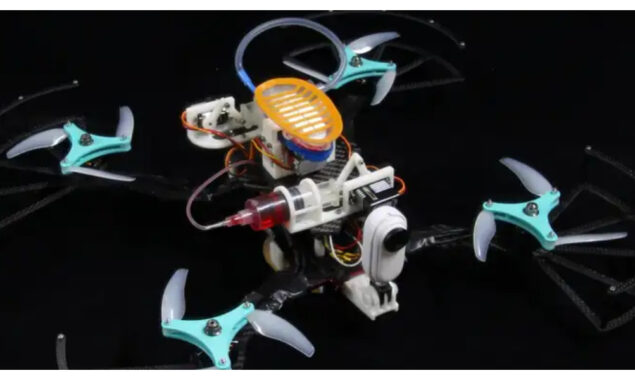Mayor of San Francisco has proposed camera access laws
On Wednesday, the mayor of San Francisco, California, submitted legislation to improve...

According to its developers, a robotic drone that can move through air and water and attach itself to larger objects using a suction cup might be beneficial for tagging wild animals.
The suction cup was inspired by the remora fish, which has a symbiotic connection with bigger marine organisms in which the remora consumes parasites that annoy its host in exchange for a ride.
Wen at Beihang University in Beijing, said, “My original thought was ‘let’s find a point where we can beat nature’.”
Added, “Let’s do a robot that can not only swim and stick underwater, but also can fly into the air and stick in the air. I don’t think there are any animals that can do this.”
A 3D-printed duplicate of a remora fish suction pad was made by Wen and his colleagues. The segmented arrangement of the little rubber-like pad may generate a tight seal even when part of the pad isn’t in touch with a surface.
Strong suction may be induced by adjusting the volume of each piece once a seal has been achieved — hydraulically in the robot, but muscularly in the fish.
Wen was also inspired by kingfishers’ ability to fly into water and grab food by folding their wings as they reach the water’s surface. The drone’s rotors include movable blades that automatically fold and unfold as the RPM is varied between high and low speeds for air flight and work.
In lab testing, the 40-centimetre-long and-40-centimetre-wide drone successfully hooked itself to a moving underwater robot, hitched a ride for a brief time, and then separated. It utilised around 5% of the power it would have needed on its own propulsion when attached.
It can also hitch a ride on moving objects in the air, using just around 2% of the energy necessary to fly on its own. In a single voyage, the robot can breach the water’s surface, soar steadily in the air, and resurface many times.
It can only function at depths of up to 2.2 metres due to its inbuilt communications with controllers on the surface. Future autonomous gadgets, however, will be able to function at considerably higher depths, according to experts.
Wen believes that the drone might be beneficial in remote research missions and wildlife assessments. It could, for example, fly high enough to see whales, descend into the sea to attach a GPS tag, and repeat the procedure several times.
Catch all the Sci-Tech News, Breaking News Event and Latest News Updates on The BOL News
Download The BOL News App to get the Daily News Update & Follow us on Google News.